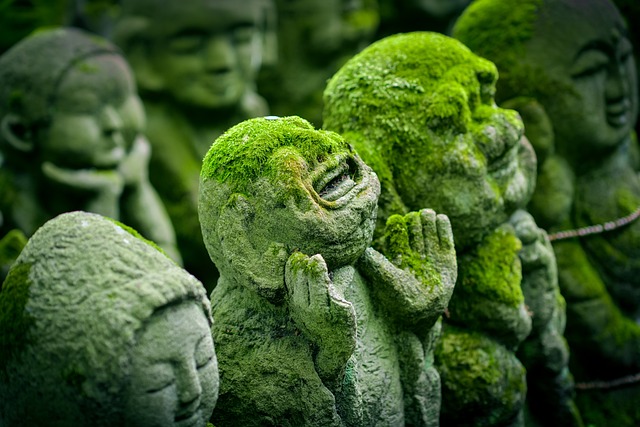
Art has long been intertwined with culture, serving as a powerful medium for expressing societal values, beliefs, and experiences.
In this article, we delve into the intricate relationship between art and culture, exploring how they shape and influence each other.
From the evolution of artistic styles throughout history to the impact of art on cultural identity, we aim to unveil the canvas that reveals the interplay between art and culture.
Join us on this insightful journey as we uncover the profound connections between these two realms.
Key Takeaways
- Artistic movements throughout history have shaped art perception and creation, pushing boundaries and experimenting with techniques.
- Art reflects societal values, beliefs, and ideologies, providing a platform to challenge or reinforce paradigms and capturing the essence of time and collective consciousness.
- Cultural influences play a significant role in artistic styles, sparking debates on ownership and authenticity, and bringing cross-cultural exchange and influences, enriching artistic expression and broadening understanding.
- Art's role in preserving cultural heritage involves safeguarding and transmitting traditions and values, restoration and conservation of artworks, documentation for future reference, and preserving cultural heritage's relevance in society.
- Art has a profound impact on cultural identity, shaping collective values and beliefs, acting as a catalyst for cultural change and preservation, expressing unique perspectives and traditions, fostering dialogue and understanding, and transcending language barriers to communicate universal ideas.
The Evolution of Art Throughout History
The evolution of art throughout history has been characterized by significant shifts in style, technique, and subject matter. Artistic movements have played a crucial role in shaping the way art is perceived and created. From the Renaissance to Impressionism, Cubism to Abstract Expressionism, each movement brought forth new ideas and challenged traditional norms.
Famous artists such as Leonardo da Vinci, Vincent van Gogh, Pablo Picasso, and Jackson Pollock have made indelible contributions to these artistic movements. They pushed boundaries, experimented with techniques and mediums, and explored new ways of expressing their thoughts and emotions on canvas. These artists became pioneers in their respective eras, leaving an enduring legacy that continues to inspire future generations of artists.
The evolution of art serves as a testament to the infinite possibilities of human creativity and the powerful impact it can have on culture.
Art as a Reflection of Society
Artistic expressions mirror the values, beliefs, and ideologies of the society in which they are created. They serve as a reflection of societal norms and provide a platform for artists to challenge or reinforce existing paradigms. Through their work, artists capture the essence of their time and offer a window into the collective consciousness of a society.
Brushstrokes on canvas convey the tumultuous emotions experienced during times of social unrest.

Sculptures embody the physical ideals that define beauty and power within a culture.
Performance art pushes boundaries, challenging societal taboos and questioning established norms.
Artistic expression not only reflects societal values but also has the power to shape them. Artists have historically played an influential role in advocating for change or promoting cultural preservation. By pushing boundaries and presenting alternative perspectives, art encourages critical thinking and broadens our understanding of different cultures and societies.
It is through artistic expression that we can truly appreciate the diversity and complexity of human experience.
Cultural Influences on Artistic Styles
Cultural influences shape the development and evolution of various artistic styles. One significant aspect is cultural appropriation in art, where elements from one culture are borrowed or adopted by another. This practice has sparked debates on issues of cultural ownership, respect, and authenticity.
Globalization has also had a profound impact on artistic styles, as it has brought cultures closer together and created opportunities for cross-cultural exchange. Artists now have access to a diverse range of influences and can incorporate different cultural elements into their work.
As a result, artistic styles have become more eclectic and hybridized, reflecting the interconnectedness of our globalized world. This interplay between cultures not only enriches artistic expression but also challenges traditional notions of identity and belonging in art.
Art's Role in Preserving Cultural Heritage
Preserving cultural heritage, art plays a crucial role in safeguarding and transmitting traditional practices, beliefs, and values across generations. It serves as a tangible representation of a community's identity and history. Through various preservation techniques, art ensures that cultural significance is not lost or forgotten.
One such technique is restoration, which involves repairing damaged artworks to their original state. This process requires extensive research and expertise to maintain the integrity of the piece while also addressing any deterioration or damage it may have suffered over time.

Another preservation method is documentation, where art is meticulously photographed or cataloged to create a record for future reference. This allows scholars and historians to study and understand the cultural context behind these artworks.
Lastly, art conservation involves preventing further decay or damage by implementing preventive measures such as controlled environments or appropriate handling procedures.
By employing these preservation techniques, art acts as an invaluable tool in preserving cultural heritage and ensuring its continued relevance in contemporary society.
The Impact of Art on Cultural Identity
An examination of the impact of artistic expression on the construction and preservation of cultural identity reveals its significant role in shaping collective values and beliefs.
Artistic expression is not only a means of preserving cultural heritage but also a catalyst for cultural change. Through art, individuals and communities can express their unique perspectives, traditions, and experiences, thereby forging a distinct cultural identity.
Moreover, art serves as a powerful tool for cultural assimilation, allowing different cultures to interact and influence one another. By embracing diverse artistic expressions, societies can foster an environment that encourages dialogue, understanding, and acceptance.
Art has the ability to transcend language barriers and communicate universal emotions and ideas, making it an invaluable instrument in shaping and maintaining cultural identity amidst an ever-changing world.
Frequently Asked Questions
How do different art forms like painting, sculpture, and photography contribute to the evolution of art throughout history?
Different art forms like painting, sculpture, and photography have played a significant role in the evolution of art throughout history. They have not only shaped artistic styles and techniques but also had a profound impact on society, reflecting cultural values and ideologies.
What are some specific examples of art that have been used as a reflection of societal issues or movements?
Art as a form of activism is exemplified by works such as Banksy's street art, which critiques societal issues like inequality and political corruption. Art as a means of storytelling can be seen in Kehinde Wiley's portraits that challenge historical narratives and celebrate marginalized communities.

How does cultural diversity and globalization influence artistic styles in different regions around the world?
The influence of globalization on traditional art forms and the impact of cultural exchange on artistic expression are significant factors in shaping artistic styles in different regions around the world.
What are some strategies and techniques used by artists to preserve cultural heritage through their artwork?
Preservation techniques utilized by artists to safeguard cultural heritage through their artwork include the incorporation of cultural symbolism, which serves as a means of conveying traditions and values that connect individuals to their roots.
Can you provide examples of how art has played a significant role in shaping cultural identity?
Art serves as a catalyst for social change, playing a significant role in shaping cultural identity. Through its ability to express diverse perspectives and preserve indigenous cultures, art empowers communities to redefine their narratives and assert their freedom of expression.
 SportsHollywoodLifestyleFashionHome & GardenTrendsPrivacy PolicyTerms And Conditions
SportsHollywoodLifestyleFashionHome & GardenTrendsPrivacy PolicyTerms And Conditions
